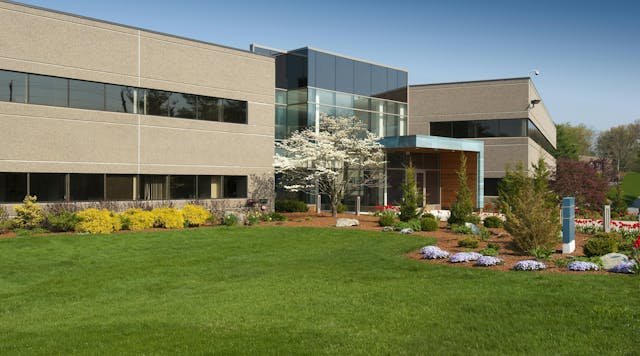Hilton Head Landscapes Things To Know Before You Buy
Table of ContentsWhat Does Hilton Head Landscapes Mean?The smart Trick of Hilton Head Landscapes That Nobody is Talking AboutIndicators on Hilton Head Landscapes You Need To KnowThe Basic Principles Of Hilton Head Landscapes Examine This Report on Hilton Head LandscapesThe Only Guide for Hilton Head LandscapesThe Basic Principles Of Hilton Head Landscapes
Line creates all types and patterns and can be utilized in a range of ways in the landscape. Line in the landscape is developed by the edge between 2 products, the outline or shape of a form, or a lengthy linear function. Lines are a powerful device for the designer since they can be made use of to produce a boundless range of forms and forms, and they regulate movement of the eye and the body.

Lines can have one or even more characteristics, such as those defined below, yet they normally offer various objectives. Number 1. Lines in the landscape - landscape design hilton head. The residential or commercial properties of lines determine exactly how people react to the landscape, both emotionally and literally. Straight lines are structural and powerful; they create a formal personality, are normally associated with an in proportion layout, and lead the eye directly to a focal factor.
The Main Principles Of Hilton Head Landscapes
Straight lines are usually discovered in hardscape sides and product. Curved lines develop a casual, all-natural, loosened up personality that is linked more with nature and unbalanced balance. Bent lines move the eye at a slower rate and add enigma to the room by creating surprise views. Vertical lines relocate the eye up, making a room really feel larger.
Upright lines in the landscape consist of tall, narrow plant material, such as trees, or tall structures, such as an arbor or a bird home on a post. Straight lines relocate the eye along the ground aircraft and can make a space really feel larger. Low lines are more suppressed and produce a feeling of remainder or repose.
Excitement About Hilton Head Landscapes
Reduced lines are developed by reduced garden walls, pathways, and short hedges. Lines are utilized to attract kinds on a plan. In strategy sight, they define plant beds and hardscape areas. Lines are likewise produced by the vertical kinds of built attributes and plant material. There are three key line types that develop type in the landscape: bedlines, hardscape lines, and plant lines.
Bedlines link plant product to your home and hardscape because the eye adheres to the line, relocating the look through the landscape. Hardscape lines are produced by the edge of the hardscape, which defines the built framework. Line can likewise be developed by lengthy and narrow products, such as a fencing or wall.
Some Known Facts About Hilton Head Landscapes.
Form is found in both hardscape and plants, and it is typically the dominant visual component that spatially arranges the landscape and typically establishes the style of the yard. The form of frameworks, plant beds, and garden ornaments additionally figures out the overall form theme of the garden. Official, geometric forms include circles, squares, and polygons.
Plants produce type in the yard with their outlines or silhouettes, however form can likewise be specified by a void or negative area in between plants - landscaping hilton head sc (https://hilton-head-landscapes.jimdosite.com). Circles can be cycles, or they can be split into fifty percent circles or circle sections and combined with lines to produce arcs and tangents
Some Ideas on Hilton Head Landscapes You Should Know
Circles can likewise be extended right into ovals and ellipses for more range and interest. Circles are a solid design kind since the eye is always attracted to the facility, which can be utilized to stress a focal point or link other types. Number 2. Circular forms in hardscape and yard panels.
The square kind can likewise be fractional and secondhand continuously to develop a grid pattern. Unlike circles, squares are more powerful on the brink, which can be aligned or overlapped to develop distinct patterns and even more intricate types. Polygons are many-sided forms with straight edges. Triangulars, as an example, are three-sided polygons.
Meandering lines often mimic the natural program of rivers or streams and can be described as smooth lines with deeply bent undulations. Twisting lines (Figure 3) work well for pathways, plant bedlines, and dry stream beds. Meandering lines can add rate of interest and secret to a garden by leading audiences around corners to discover new views find out here now and areas.
Some Ideas on Hilton Head Landscapes You Need To Know

Common plant kinds are well developed and standardized, as kind is the most constant and recognizable characteristic of plants. Kind can likewise be produced through the massing of plants, where the overall mass develops a different form than a specific plant.
An extremely contrasting kind should be made use of with careone or 2 work well as a focal factor, but a lot of wreak havoc. Natural plant kinds, instead of over-trimmed kinds, ought to develop the bulk of the composition. The importance of overall kind is much more or much less depending on the viewing perspectivethe type of a tree can show up rather different to a person standing under the canopy versus viewing the tree from a range in an open field.
Hilton Head Landscapes Can Be Fun For Anyone
Plant kinds also develop and specify the gap or open rooms in between the plants, creating either convex or concave forms in the spaces. High-arching tree branches generally produce a concave open area under the branches, and a rounded cover with reduced branches loads the room to develop a convex kind outdoors room under the tree.
